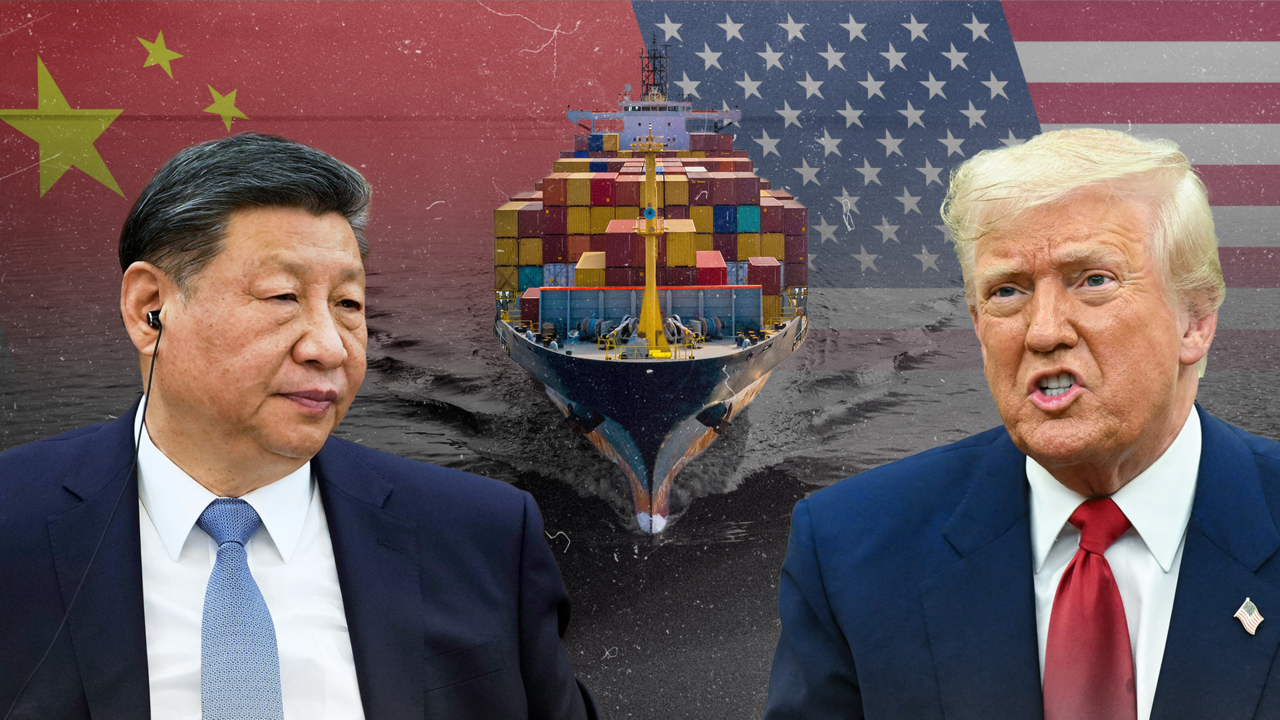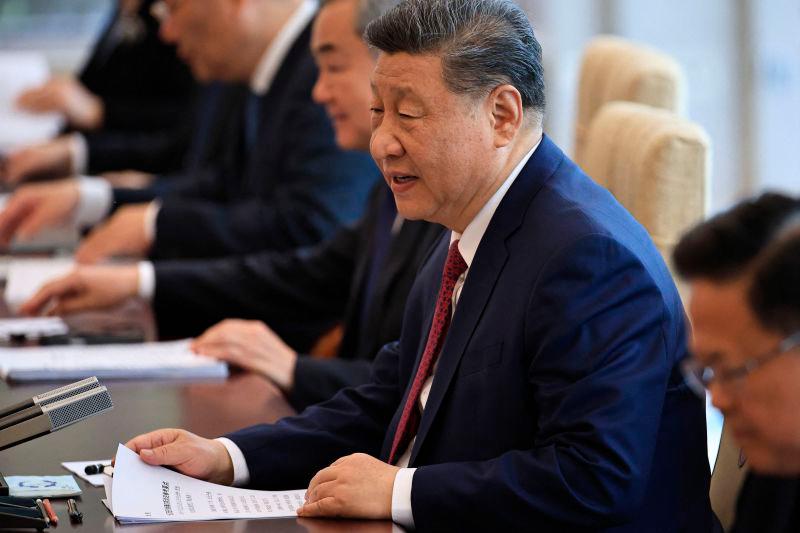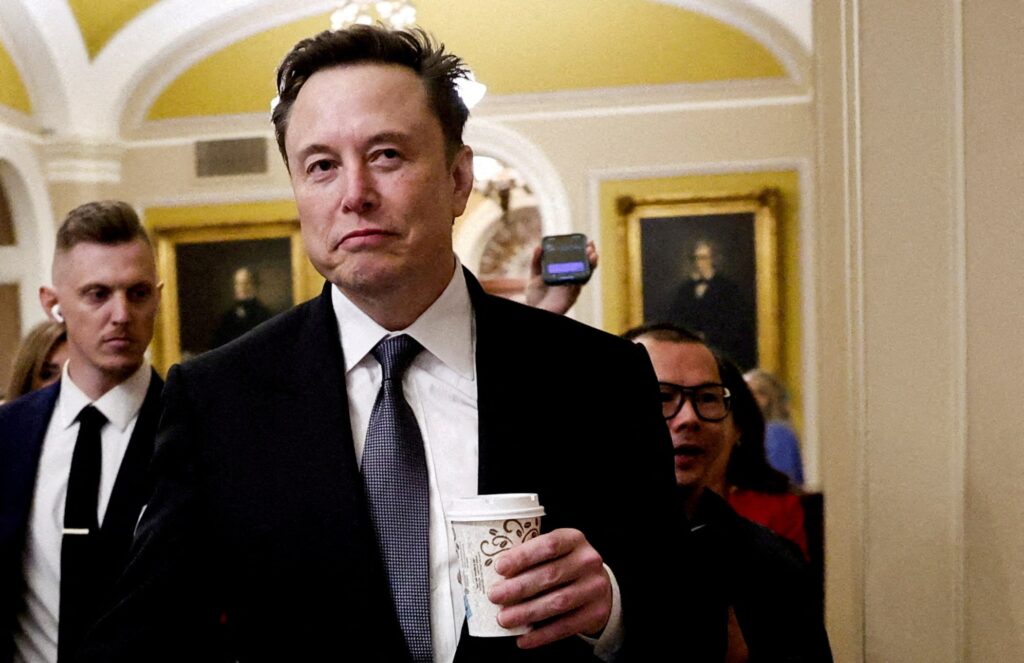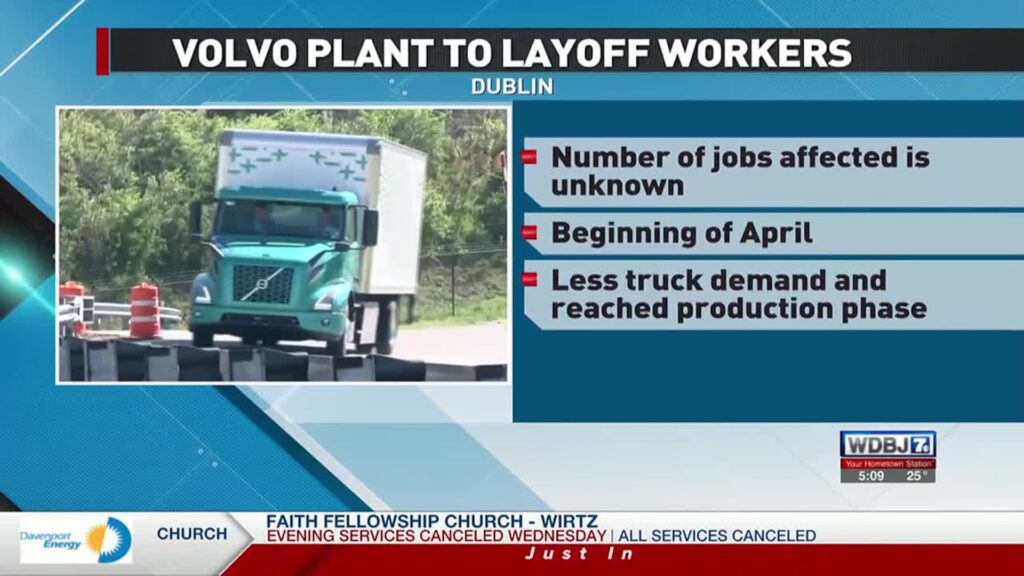Now Reading: Trump Defends Tariffs as China Retaliates with Shocking 125% Increase
-
01
Trump Defends Tariffs as China Retaliates with Shocking 125% Increase

Trump Defends Tariffs as China Retaliates with Shocking 125% Increase
Trump Stands Firm as Trade War with China Reaches New Heights
In a dramatic escalation of the ongoing trade battle between global superpowers, President Donald Trump defended his aggressive tariff strategy on Friday, even as China announced a staggering 125 percent increase on American goods. The economic showdown has sent shockwaves through international financial markets, with investors scrambling to respond.
“We are doing really well on our tariff policy,” Trump declared on his Truth Social platform, seemingly unfazed by the immediate market turmoil that followed China’s announcement. “Very exciting for America, and the World!!! It is moving along quickly.”
Global Markets Reel as Economic Giants Trade Blows
The financial impact was swift and significant. Investors dumped U.S. government bonds, the dollar weakened, and stock prices fluctuated wildly as markets struggled to process the implications of this latest round of economic hostilities between the world’s two largest economies.
Just a week earlier, Trump had announced sweeping import taxes on multiple trade partners. While the administration later reduced some tariffs to 10 percent for a 90-day period, the levies specifically targeting Chinese goods were increased to a whopping 145 percent – a move that prompted Beijing’s dramatic counterpunch.
White House Press Secretary Karoline Leavitt made the administration’s position crystal clear: “The president made it very clear, when the United States is punched he will punch back harder.”

Xi Jinping Breaks Silence: “China Is Not Afraid”
Chinese President Xi Jinping addressed the escalating tensions for the first time on Friday, sending a resolute message during talks with Spanish Prime Minister Pedro Sanchez. Xi stated plainly that China was “not afraid” and urged the European Union to “jointly resist unilateral bullying practices.”
Following Xi’s comments, China’s Commerce Ministry announced that the new 125 percent tariffs on U.S. goods would take effect the very next day – Saturday, April 12. The ministry’s spokesperson placed the blame for the current situation squarely on the United States, dismissing Trump’s approach as a “numbers game” that “will become a joke.”
In a telling detail, China’s finance ministry added that tariffs would not rise further – effectively acknowledging that the current level had already made most imports financially impractical.

Friendship or Foe? Trump’s Mixed Messaging on Xi
Despite the increasingly hostile economic environment, Trump maintained a surprisingly optimistic tone when discussing his personal relationship with the Chinese leader. “He’s been a friend of mine for a long period of time. I think that we’ll end up working out something that’s very good for both countries,” Trump told reporters.
This cordial messaging stands in stark contrast to the administration’s actions and the behind-the-scenes positioning taking place. U.S. officials have indicated they expect Xi to make the next move toward reconciliation, suggesting the ball is firmly in China’s court.
The White House also noted that 15 other countries had offers “on the table” during the current tariff pause, potentially signaling that the U.S. has alternative trade options if relations with China continue to deteriorate.
Economic Warning Signs Flash as Tensions Mount
As the standoff continues, economic pressure is mounting on the Trump administration. Bond yields rose again on Friday, reflecting investor fears and weakening demand for typically safe-haven assets. Though the White House insisted there was no evidence suggesting China was selling off its substantial holdings of U.S. Treasury securities, such a move would significantly raise borrowing costs for the American government.
The Federal Reserve has weighed in with concerns that Trump’s aggressive tariff strategy could trigger higher inflation and slower economic growth – a painful combination for American consumers and businesses.
Economists have been increasingly vocal about the dangers, warning that prolonged disruption in U.S.-China trade relationships could result in higher prices for everyday Americans and significantly increase the risk of a global recession.

International Community Braces for Impact
Financial analyst Ipek Ozkardeskaya of Swissquote Bank didn’t mince words when speaking to AFP about the situation, noting that the current tariff levels were “so high that they don’t make sense anymore.” Perhaps more concerning, the analyst added that China appeared willing to go “as far as needed” in this economic confrontation.
European leaders are preparing for their own diplomatic maneuvering, with EU-China talks scheduled and a July summit marking 50 years of EU-China relations on the horizon. EU trade chief Maros Sefcovic is set to meet with U.S. officials in Washington on Monday, likely to discuss the widening economic fallout.
In what could signal yet another complication, European Commission President Ursula von der Leyen hinted at potential European countermeasures if the situation escalates further. She told the Financial Times that the bloc possesses a “wide range of countermeasures,” including possible tariffs targeting digital services that could impact major U.S. tech companies.
What Happens Next in This High-Stakes Showdown?
With tariffs now reaching levels that effectively halt normal trade between the world’s largest economies, observers are left wondering what the endgame might be. Will economic pain force one side to blink first? Could Trump’s personal relationship with Xi create an unexpected path to resolution? Or are we witnessing the beginning of a prolonged economic cold war with global implications?
As financial markets continue to react and consumers brace for potential price increases, the coming weeks will be critical in determining whether this trade conflict can be resolved or if it will continue to escalate with unpredictable consequences for the global economy.













